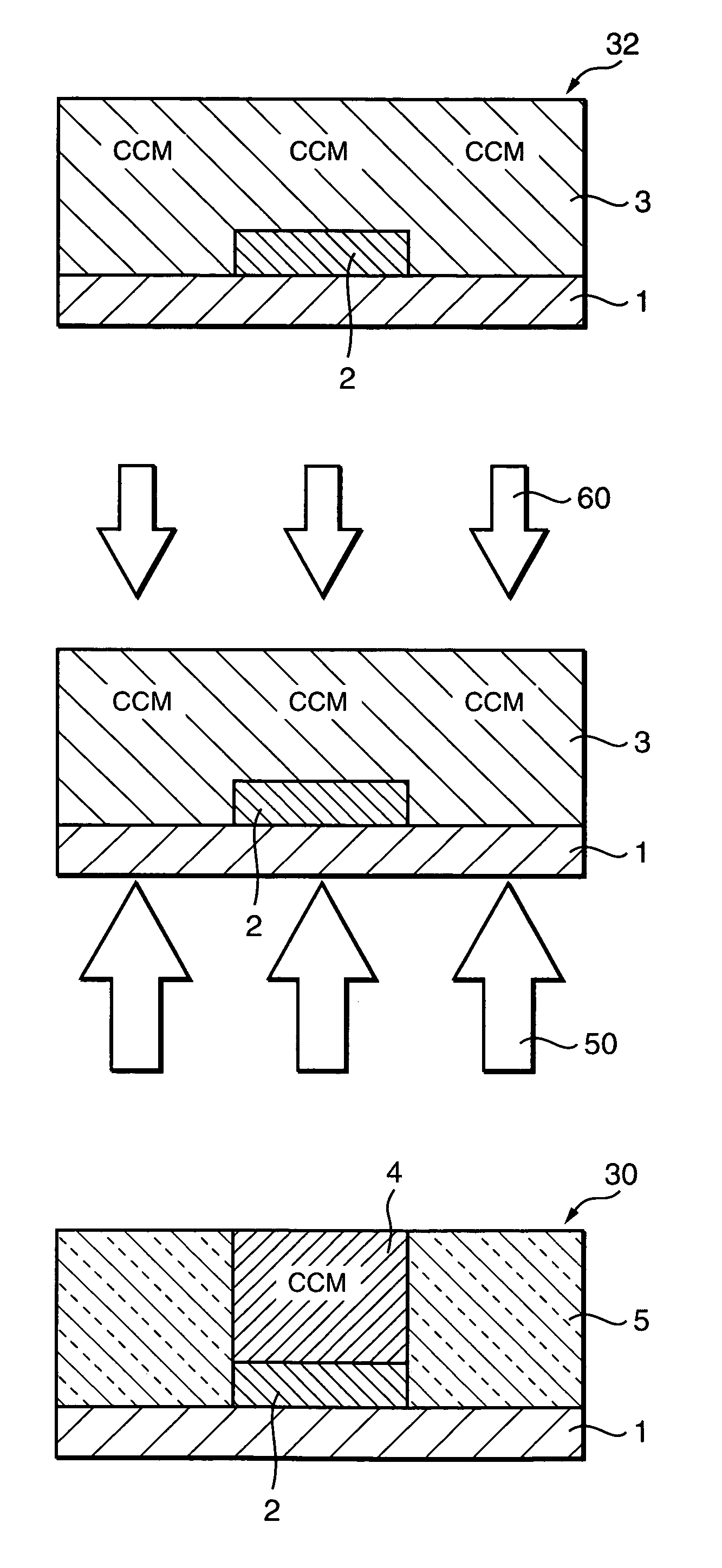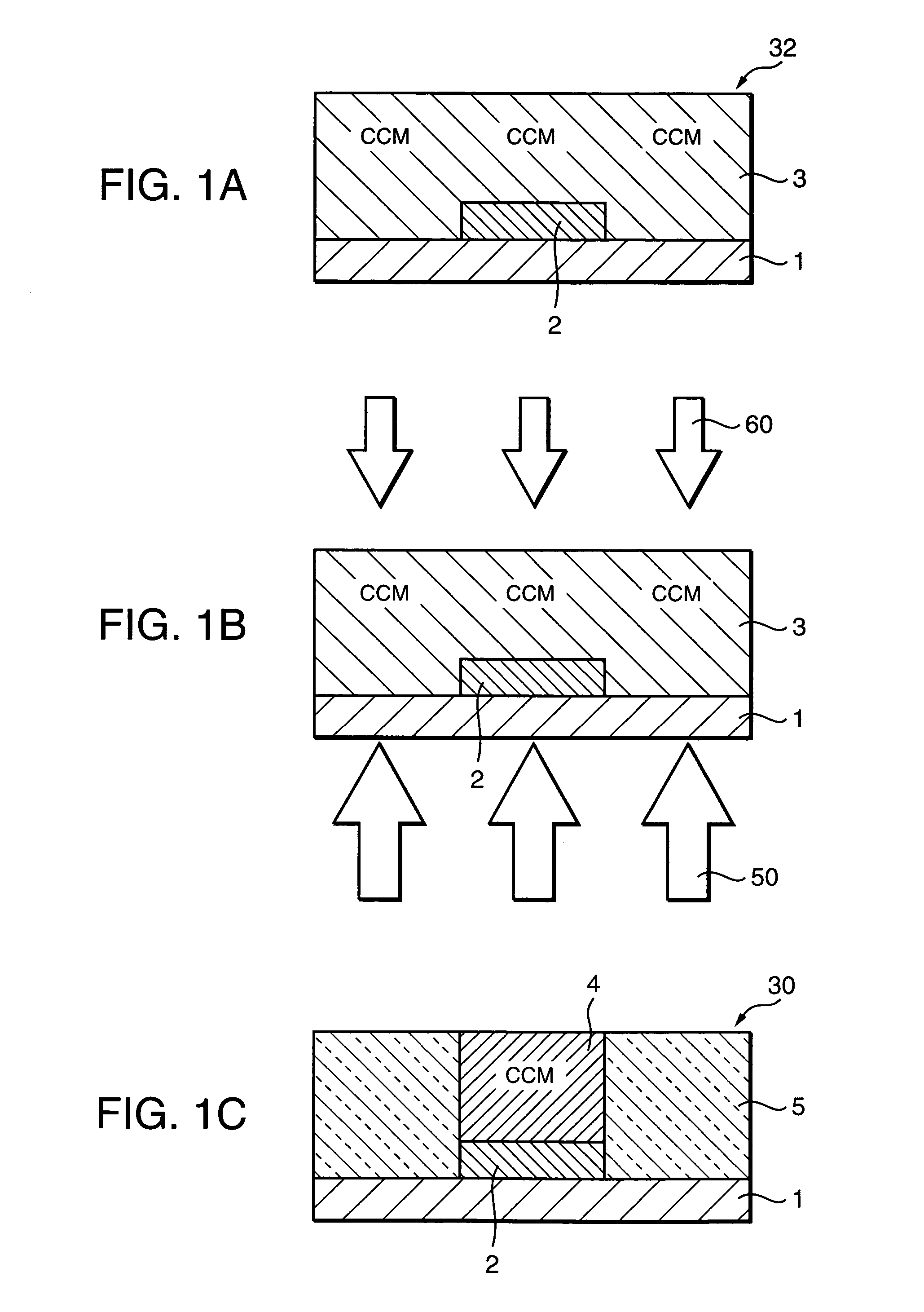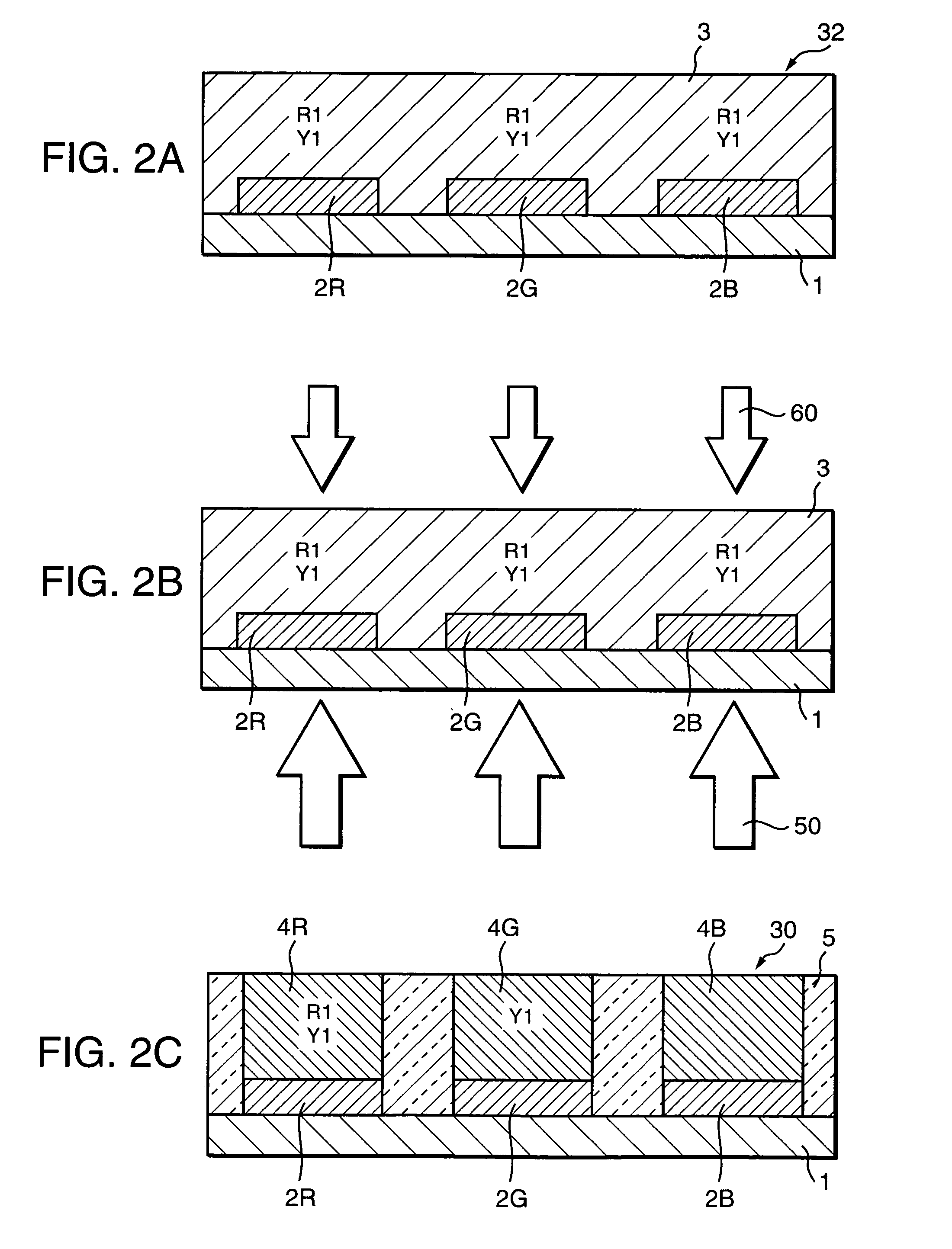Method and apparatus for manufacturing a color conversion filter
a technology of color conversion filter and manufacturing method, which is applied in the direction of photosensitive materials, identification means, instruments, etc., can solve the problems of pattern shape reproducibility and pattern deformation in subsequent manufacturing steps, reduce efficiency, and reduce the efficiency of filtering, so as to reduce the deformation or the like of the color conversion layer, shorten the process, and simple mechanisms
- Summary
- Abstract
- Description
- Claims
- Application Information
AI Technical Summary
Benefits of technology
Problems solved by technology
Method used
Image
Examples
example 1
[0096]After a blue filter material (Color Mosaic CB-7001 of Fujifilm Arch Co., Ltd.) was applied to a transparent glass substrate 1 by spin coating, patterning was performed by photolithography. As a result, a blue color filter layer 2B was formed in line patterns, wherein the lines were 0.1 mm in width, and 2 μm in thickness, separated by 0.33 mm and extended in the vertical direction.
[0097]Then, a solution of fluorescent light conversion coloring matter was prepared in which rhodamine 6G (0.3 part by weight), Basic Violet 11 (0.3 part by weight), and coumarin 6 (0.3 part by weight) were dissolved in a propylene glycol monoethyl acetate solvent (120 parts by weight). PMMA (poly(methyl methacrylate); 100 parts by weight) and di-tert-butyl peroxide (1 part by weight) were added to and dissolved in the prepared solution. As a result, a coating liquid was obtained. The coating liquid was applied by spin coating and dried by heating, whereby a 7-μm-thick coloring matter layer 3 was form...
example 2
[0101]After a blue filter material (Color Mosaic CB-7001 of Fujifilm Arch Co., Ltd.) was applied to a transparent glass substrate 1 by spin coating, patterning was performed by photolithography. As a result a blue color filter layer 2B was formed in line patterns, the lines being 0.1 mm in width, separated by 0.33 mm, and 2 μm in thickness, and extended in the vertical direction.
[0102]After a green filter material (Color Mosaic CG-7001 of Fujifilm Arch Co., Ltd.) was applied, by spin coating, to the substrate 1 on which the blue color filter layer 2B was formed, patterning was performed by photolithography. As a result, a green color filter layer 2G was formed in line patterns, the lines being 0.1 mm in width, separated by 0.33 mm, and 2 μm in thickness, and extended in the vertical direction.
[0103]Then, after a red filter material (Color Mosaic CR-7001 of Fujifilm Arch Co., Ltd.) was applied by spin coating, patterning was performed by photolithography. As a result, a red color fil...
example 3
[0107]After a black mask material (Color Mosaic CK-7000 of Fujifilm Arch Co., Ltd.) was applied to a transparent substrate 1 by spin coating, patterning was performed by photolithography, whereby a 1.5-μm-thick black mask 6 having a plurality of openings each measuring 0.33 mm (vertical)×0.09 mm (horizontal) were obtained. The interval between the openings were set at 0.03 mm in both of the vertical and horizontal directions.
[0108]Then, after a blue filter material (Color Mosaic CB-7001 of Fujifilm Arch Co., Ltd.) was applied by spin coating, patterning was performed by photolithography. As a result, a blue color filter layer 2B was formed in line patterns, the lines being 0.1 mm in width, separated by 0.33 mm, and 2 μm in thickness, and extended in the vertical direction.
[0109]After a green filter material (Color Mosaic CG-7001 of Fujifilm Arch Co., Ltd.) was applied, by spin coating, to the substrate 1 on which the blue color filter layer 2B was formed, patterning was performed by...
PUM
| Property | Measurement | Unit |
|---|---|---|
| wavelength | aaaaa | aaaaa |
| sublimation temperature | aaaaa | aaaaa |
| temperature | aaaaa | aaaaa |
Abstract
Description
Claims
Application Information
 Login to View More
Login to View More - R&D
- Intellectual Property
- Life Sciences
- Materials
- Tech Scout
- Unparalleled Data Quality
- Higher Quality Content
- 60% Fewer Hallucinations
Browse by: Latest US Patents, China's latest patents, Technical Efficacy Thesaurus, Application Domain, Technology Topic, Popular Technical Reports.
© 2025 PatSnap. All rights reserved.Legal|Privacy policy|Modern Slavery Act Transparency Statement|Sitemap|About US| Contact US: help@patsnap.com



